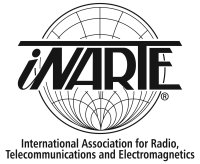Frequently Asked Questions
In order to decipher if your company is suffering from power issues, you need somewhere to start. SPGS has worked in a variety of industries and helped businesses of all kinds in power disturbances. We've prepared a list of frequently asked questions to answer any potential first round questions you may have. Contact us if you don't see your question below and we'd be happy to guide you through it.
What is a power disturbance?
A power disturbance can be many things. You may have a power disturbance on your hands if you experience random equipment failures, flickering lights, frozen computer monitors, non-scheduled equipment restarts, static shocks, major equipment outages, or failures during or after lightning strikes and power surges.
Read up on more industry terms to better understand your electrical problem.
What is the typical process to restore failed electrical equipment?
Safety is paramount at your facility. When any electrical equipment fails, the process is to restore, repair, or replace the equipment. SPGS calls this restoration process the RRR method.
If you think your electrical equipment has a short, power disturbance, or something else remember it is critical to have the machinery tested by professionals to reduce potential shock hazards.
How often do utility power companies deliver power to the average consumer?
Utility power companies deliver power on an average of 99.35-99.5% of the time. Over the course of a year, the power will go off at random for 44-57 hours.
If utility companies cause 20%, what causes the other 80% of power disturbance problems?
Utility companies aren’t the only source for power disturbances. Your facility’s own electrical power infrastructure contributes to the remaining percentage of power disturbance problems.
How much money is lost every year from power disturbances from the utility company and each facility?
Unfortunately, we don’t have real cost data to portray a dollar value. However, your company’s loss has a variety of factors that play into the outcome.
- What type of outage
- Time of outage
- Equipment damages from the outage
- Percent of facility effected from the outage
Your facility’s history also plays into the overcall loss. It wouldn't be unusual for typical power disturbance costs to be 0.5%-5.0% of all labor cost, overhead cost, production cost, or sales revenue per year.
From case histories of SPGS’s customers, the average power disturbance percentage cost seems to be 1.5%-3.5% of all labor cost, overhead cost, production cost or sales revenue per year. Read up on our case studies and see the SPGS methods to prevent loss and lower spending.
What type of equipment is considered voltage susceptible?
As times change, we become more and more dependent on technology. Extremely voltage-sensitive equipment could be:
- Computers
- Communication and switching equipment or
- Any other equipment incorporating semiconductors
- Networked equipment
- Copiers
- Printers
- Computer-controlled production equipment
This equipment isn’t cheap - make sure it’s protected against power disturbances and surges. We give you a straightforward plan and training for better functioning equipment and assurance to pass inspections.
To have the precise maximum allowable voltage that equipment can withstand without damage or upset, check out this information on equipment voltage surge thresholds.
How can I recognize power quality problems?
The signs of power issues can be easily overlooked. something as simple as a flickering light may be the result of a dangerous problem. What appears to be chronic hardware or software problems can actually be masked as power/grounding problems. Stay alert for the signs indicating power quality problems:
- Increased service calls
- Poor equipment performance
- Partial equipment failure
- Equipment "ghost" problems
- Repetitive downtime
- Failures caused by building event
- Shortened equipment life
- Downtime and performance problems during/after bad weather and storms
What is Holistic Electrical Facility Protection?
There are multiple layers of electrical protection and different Grounding System designs, but the purpose is the same: protect the entire facility against electrical power disturbances and verify proper bonding and grounding of all metallic objects and sensitive devices within, near, or connected to the facility.
It is an inherent system intended to protect personnel and equipment within, near, or connected to a building against:
- Lightning surges
- Power surges
- Power faults
- Transient voltage
- Ground faults
Get expert insight from SPGS with our Grounding Training Course.





